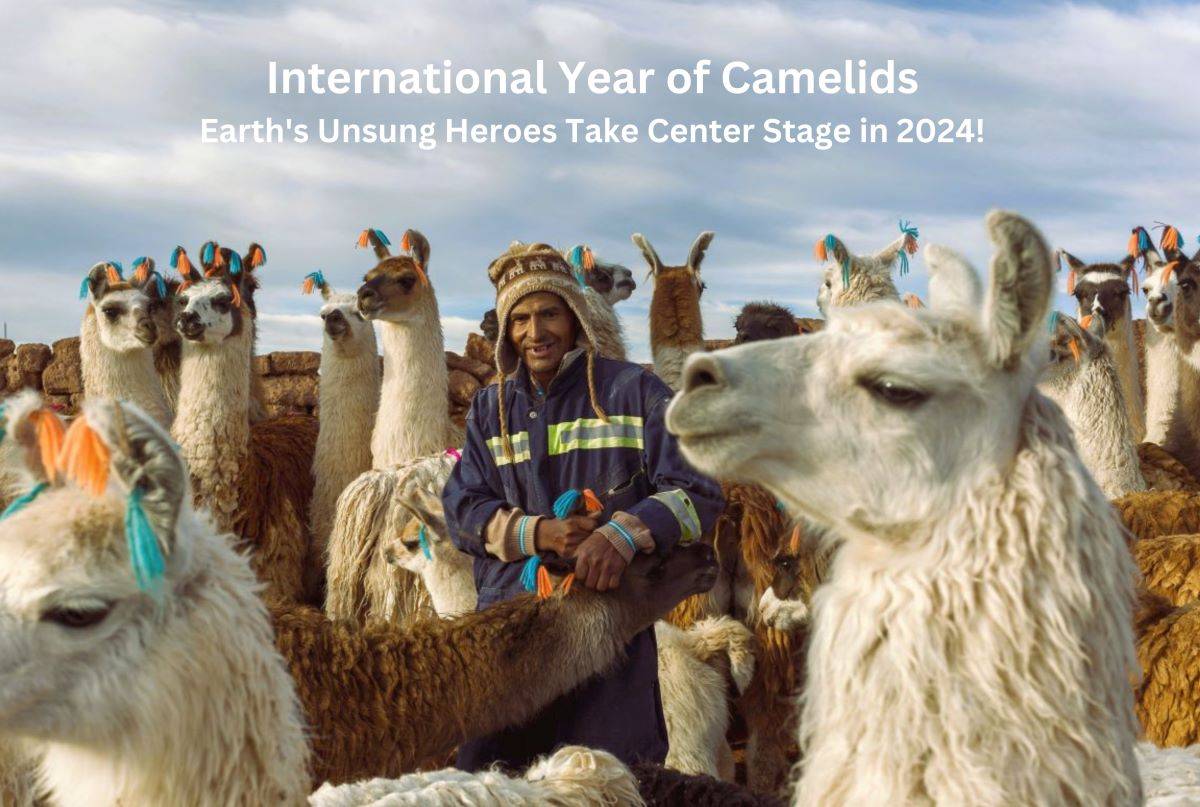
The United Nations announced 2024 as the International Year of Camelids (IYC 2024). This declaration aims to bring attention to the varied contributions of camelids, such as alpacas, Bactrian camels, dromedaries, guanacos, llamas, and vicuñas, to global food security, nutrition, and economic growth. Due to their ability to survive in hostile environments, camelids are used as climate change advocates. We will delve into the varied roles played by these remarkable creatures and unravel the objectives set forth during the International Year of Camelids.
Let’s explore the multifaceted world of camelids and their pivotal role in fostering sustainable, climate-resilient communities worldwide.
Understanding Camelids: An Overview
1. Influence Across Borders
The Food and Agricultural Organization (FAO) reports that camelids impact millions of households in over 90 countries. Beyond their status as animals, they are vital components of societies worldwide, playing unique roles in diverse ecosystems.
2. Diverse Species, Unique Contributions
Camelids encompass a broad spectrum of species, each contributing uniquely to the sustainability of communities and ecosystems. From the highlands of the Andes to the arid lands of Africa and Asia, their roles are crucial.
Camelids and Sustainable Development Goals: Holistic Contributions
1. Addressing Hunger & Malnutrition
Camelids serve as crucial sources of milk and meat, significantly contributing to the global fight against hunger and malnutrition.
2. Sustainable Fibers for Clothing and Shelter
Their fibers find applications in clothing and shelter, aligning with sustainable practices and supporting local livelihoods.
3. Transportation and Agriculture Support
Camelids, reliable for transportation, also provide organic fertilizer, enhancing agricultural practices in regions where they thrive.
4. Resilience in Harsh Conditions
Thriving in challenging environments, camelids prove resilient and adaptive, making them invaluable in ecosystems facing adversity.
Impact on Indigenous Peoples and Local Communities
1. Crucial Roles in Unique Ecosystems
From the Andean highlands to arid landscapes, camelids play pivotal roles in the livelihoods of indigenous communities, ensuring the sustainability of their unique ecosystems.
2. Ambassadors for Climate Change Awareness
Surviving in harsh conditions, camelids become ambassadors for raising awareness about climate change. Their experiences and adaptations offer insights into addressing environmental challenges.
Objective of the International Year of Camelids 2024
1. Building Global Awareness
The primary goal of the International Year of Camelids 2024 is to build awareness of the untapped potential of these animals. This initiative aims to highlight the multifaceted contributions camelids make to various aspects of human life.
2. Advocacy for Increased Investment
The declaration calls for increased investment in the camelid sector. This involves advocating for more research, capacity development, and the adoption of innovative practices and technologies to further enhance the contributions of camelids.
A Global Call to Action
The year 2024 acts as a rallying point, urging global communities, governments, and organizations to recognize and harness the potential of camelids in creating sustainable and resilient societies. By celebrating the International Year of Camelids, we embark on a journey to appreciate and support these remarkable creatures shaping our world silently but significantly for centuries.
















